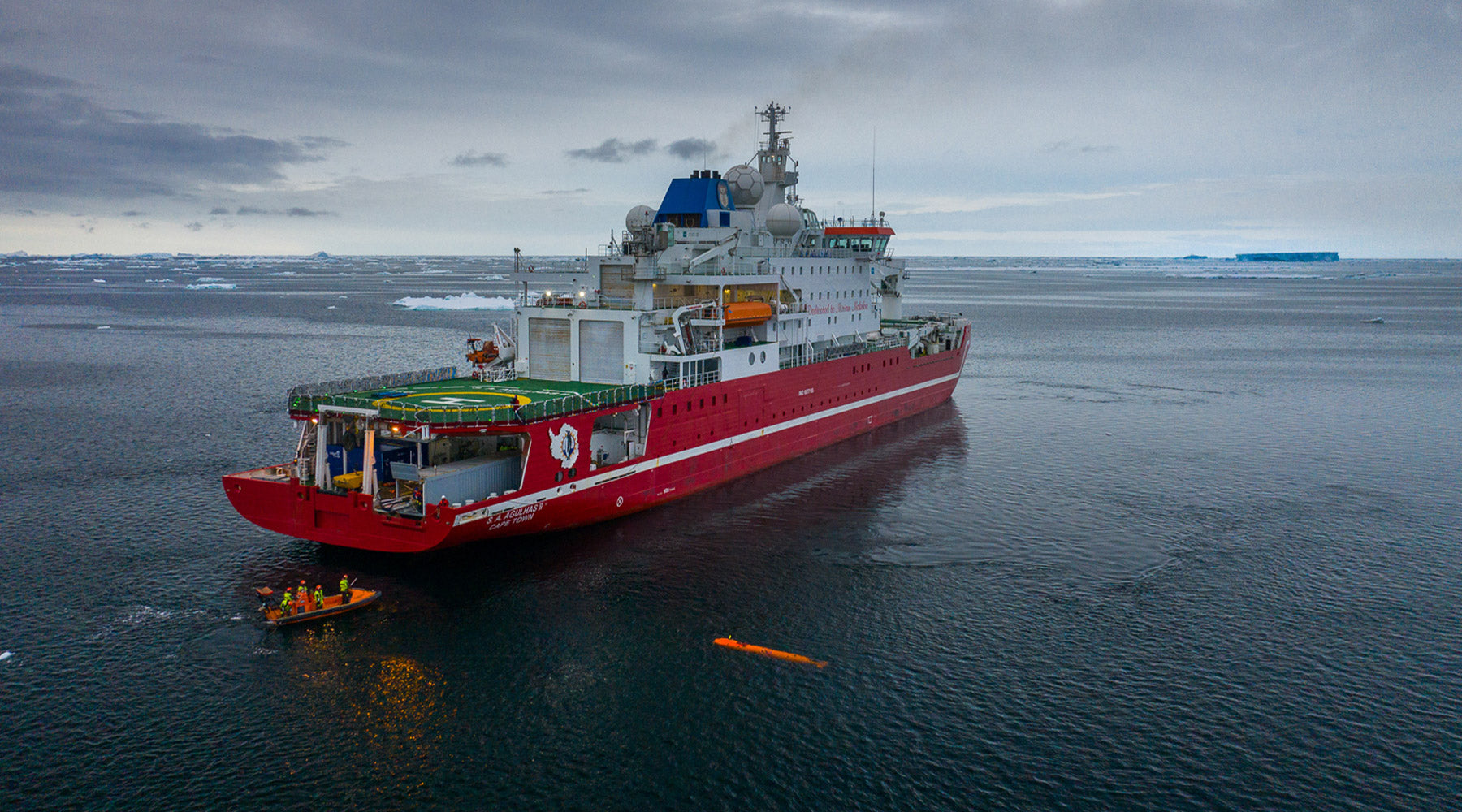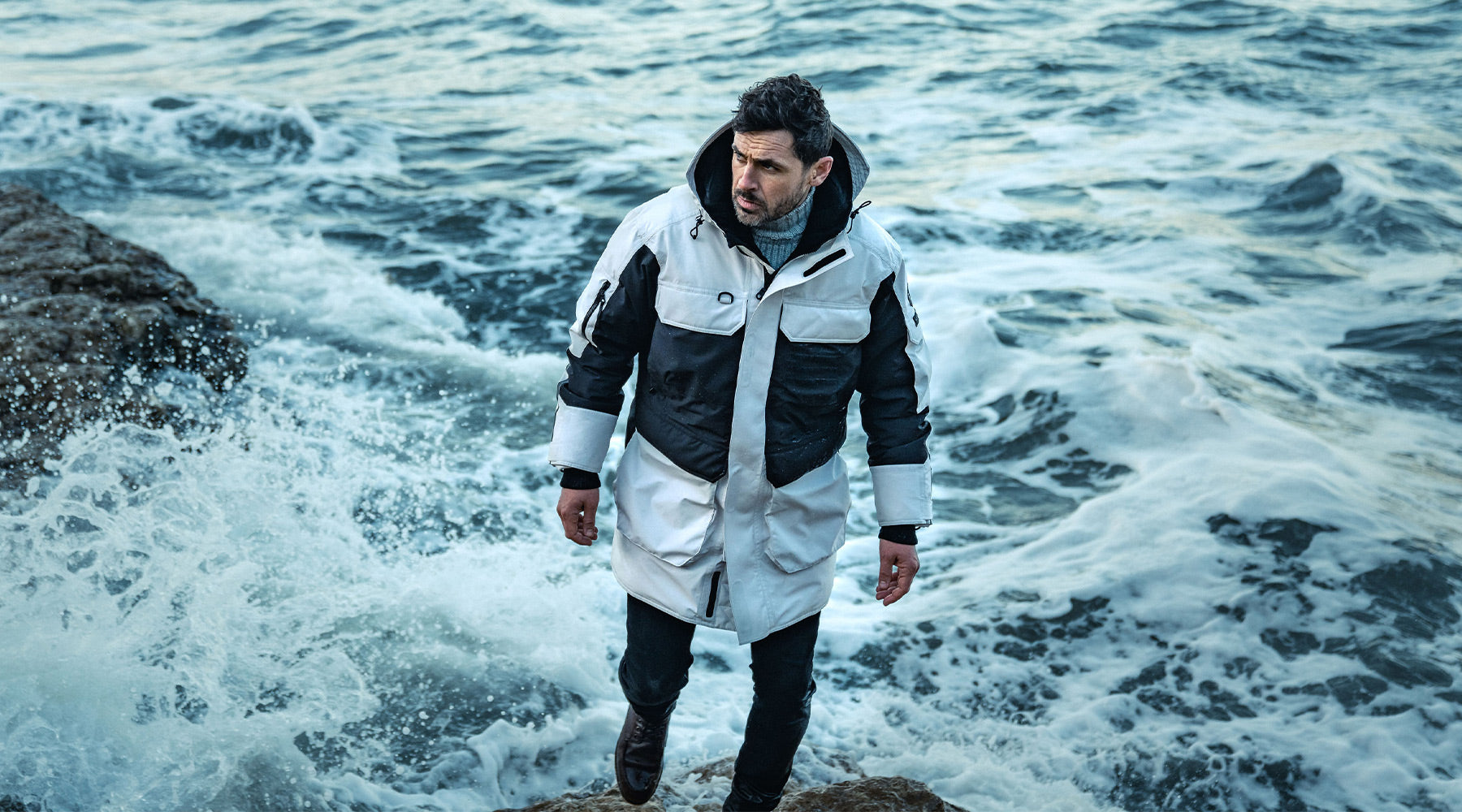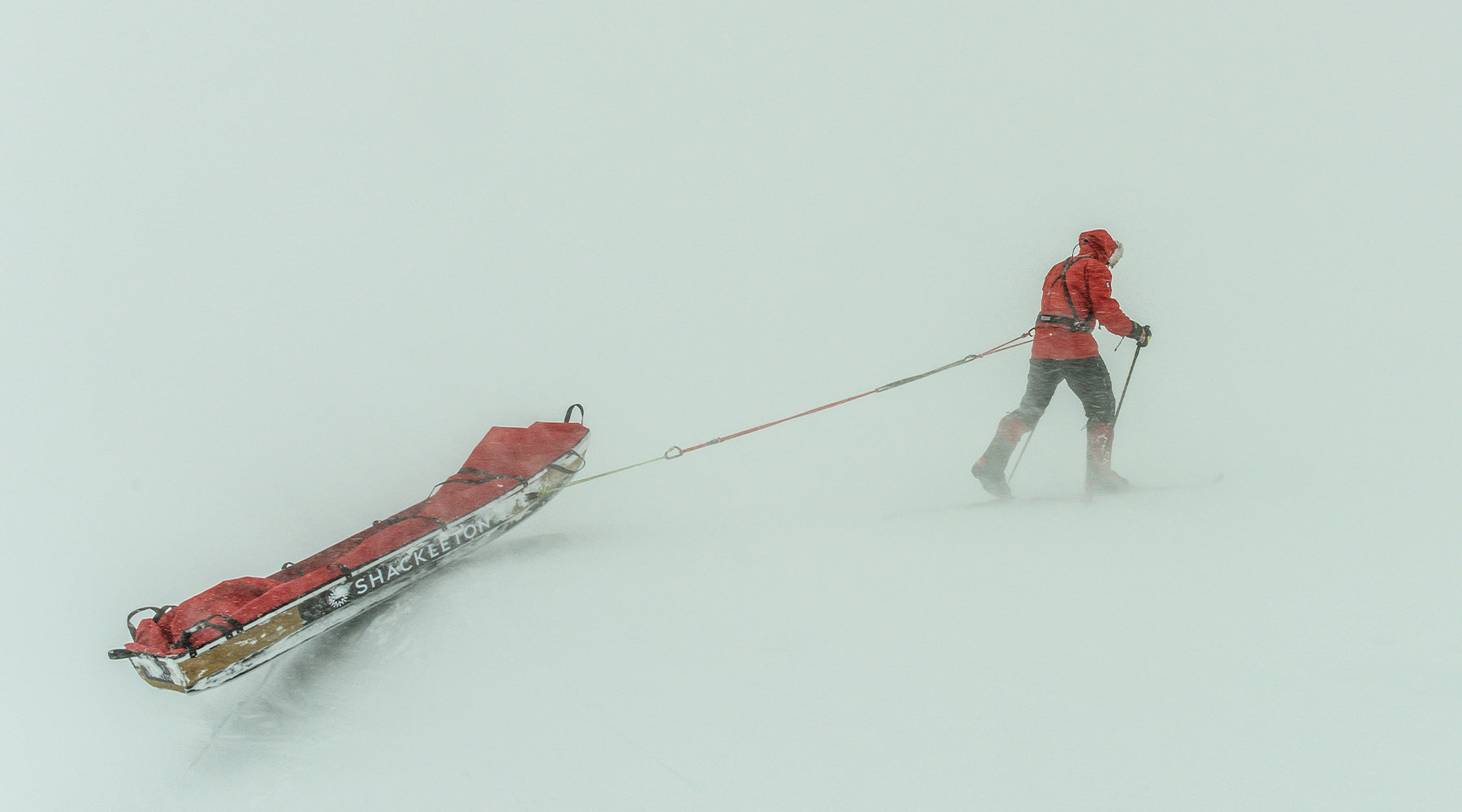
Searching for Endurance
In 2019, a crew headed into the Weddell Sea in an attempt to locate Ernest Shackleton’s ship, Endurance, which was trapped in sea ice and sank during the fateful Imperial Trans-Antarctic Expedition, 1914-1917.
Tamara Stubbs, a photographer, aerial cinematographer and the winner of this year’s Shackleton x Leica ‘Capture the Extreme’ Photography Competition, was part of that select crew. Here, she shares the challenges and rewards of working in Antarctica.
What was your role on the Weddell Sea Expedition?
For nine weeks in the Antarctic summer of 2019, during January and February, I joined the Weddell Sea Expedition as part of a television crew for the History Channel. We were there to capture the hunt for Shackleton’s sunken ship, Endurance. Within the team, I was responsible for recording all the sound for the documentary and doing the aerial cinematography with my drones.

What was the process behind the mission and how did it pan out?
Just after Endurance sank, the Captain Frank Worsley recorded the coordinates with his sextant. He was an incredible navigator so we could be pretty hopeful that the ship would be in the area he noted. Getting to these coordinates was a big challenge, as the sea ice makes the area impenetrable most years. We had up-to-date satellite imagery, a good dose of luck and a very good Captain with a very capable ship – the South African research vessel and icebreaker the S.A Agulhas II – but we were still temporarily beset in the ice on occasions and the ship was pushed to its limits.
The research team was led by Maritime Archaeologist Mensun Bound and the plan was to scan the area around Worsley’s coordinates with an AUV (autonomous underwater vehicle). If the wreck was located, a tethered ROV (remotely operated wehicle) would be sent down to gather pictures and footage of Endurance, some 3000 metres below the surface.

AUVs are programmed to perform a search pattern and they keep hold of all the data on-board. They will do a remote ‘handshake’ at certain points to tell you they are there, and if distressed for any reason will go to a pre-determined point if possible. Despite the Agulhas II doing a good search of the area, the long-serving AUV ‘Hügin’ unfortunately disappeared after 30 hours of mapping, taking with it all the onboard data it had collected.
You’ve worked all around the world; how does Antarctica compare?
Polar regions, and in particular Antarctica, have a purity and magic; a lack of manmade objects or other distractions from nature and amazing light. It’s not until you’re in such an untouched environment that you realise how much clutter there is in the world.

Above left: the winning image in the 2021 'Capture the Extreme' Photography Competition
What are some of the greatest challenges when working in Antarctica?
Preparation and the work you put in prior to an expedition makes or breaks it. You need to have thought out, researched and talked to those with prior experience, because once you are there that is it. You have to get the preparation right.
Obviously, the biggest challenges are the remoteness and the cold. Equipment needs to be kept operational. I use cables designed to cope with the cold and heat packs for batteries – something as simple as a cool box with hand warmers in can keep them going. I made insulated jackets for the drone batteries; like humans, keeping them from getting cold in the first place is key.

Above: Tamara on the ice. Photo by Steve Saint-Amour
Did you feel a sense of responsibility while in Antarctica on this expedition?
It was such a privilege to be working on this project, and doubly so to be in Antarctica. Frank Hurley has always been a photography hero of mine, and the Ernest Shackleton/Endurance story is so epic and inspiring – to sail in their footsteps was very moving. We had a responsibility to record the expedition, and even though the end goal in finding Endurance wasn’t successful, it had many great highs and lows of its own.
See more of Tamara’s work here.


